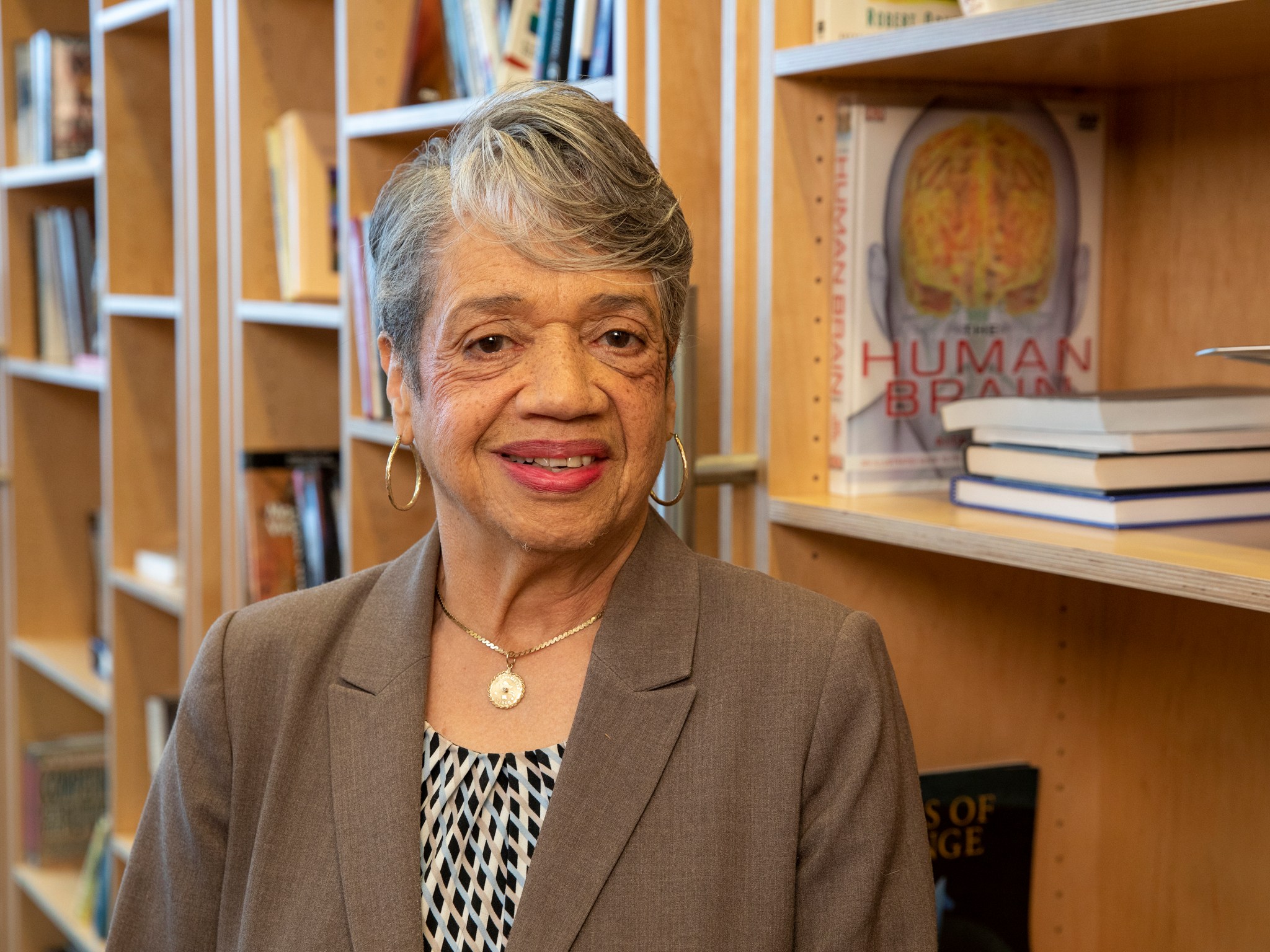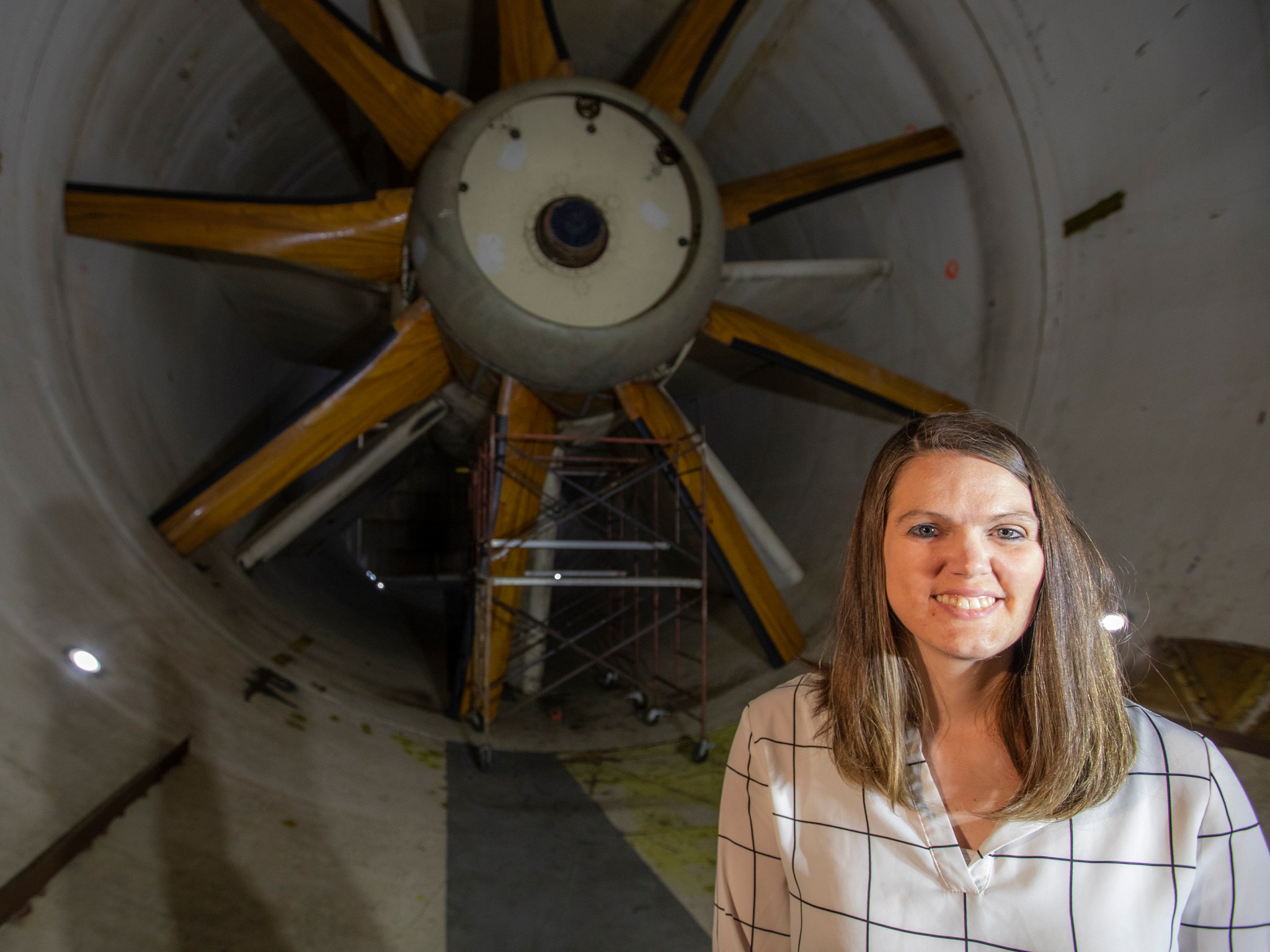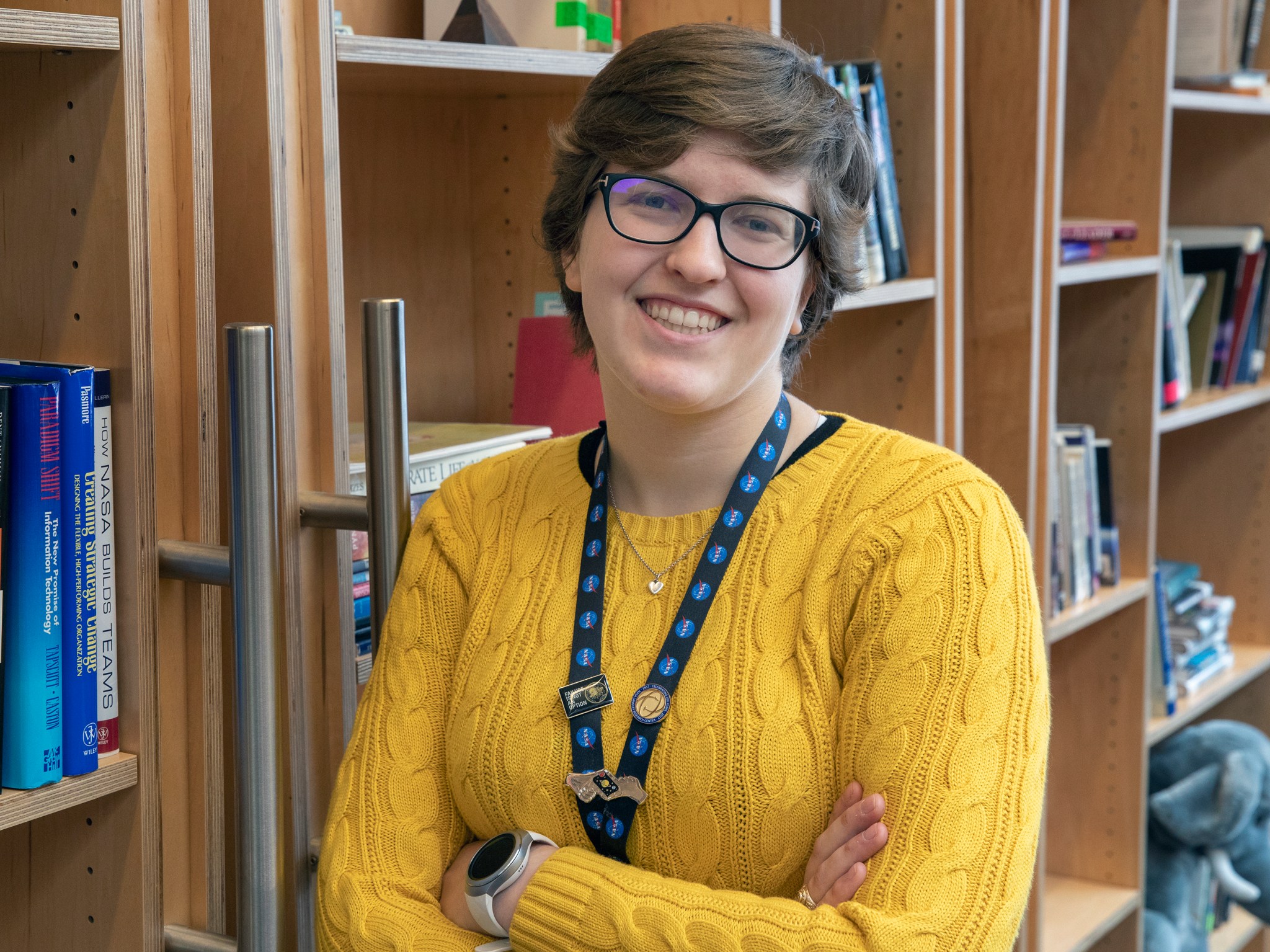Credits: NASA/Gary Banziger
Successful women always have and always will make contributions to the research and programs that advance knowledge and improve the lives of their fellow Americans at NASA’s Langley Research Center in Hampton, Virginia.
For Women’s History Month, we feature women of Langley’s past, present and future as they reflect on their time at the center, why they chose their respective career fields, their hopes and inspirations, and how they use their talents to influence of the next generation of women at NASA.
Seeing women rise first-hand
Christine Darden was always an inquisitive person. An admitted tomboy, Darden would rather help her father fix cars than play with toys. When her mother got her a talking doll, Darden didn’t use it the way she’d hoped.
“She was disappointed that instead of playing with her, I cut her open to see how she talked,” Darden said.
That was an indication of Darden’s quest for knowledge, which led her to become an eyewitness to professional and societal change in her many roles at Langley.
Darden started out as a data analyst, a job called a “human computer,” in 1967, two years before humans walked on the Moon.
During her 40-year career at NASA, Darden led an advisory team composed of representatives from industrial manufacturers and academic institutions, became the deputy program manager of The TU-144 Experiments Program, an element of NASA’s High Speed Research Program; and, in 1999, she was appointed as the director in the Program Management Office of the Aerospace Performing Center where she was responsible for Langley research in air traffic management and other aeronautics programs managed at other NASA centers. Darden also served as technical consultant on numerous government and private projects, and she is the author of more than 50 publications in the field of high lift wing design in supersonic flow, flap design, sonic boom prediction, and sonic boom minimization.
“I really enjoyed the variety of what I did,” she said. “I didn’t do the same thing every day.”
In that span, Darden saw the employment and agency advancement of women grow to heights unseen before.
“We went through a period where there were no women leaders or section heads in technical areas. (Management) took a proactive effort to try and get some women leading technical offices and that was rough for a while,” she said.
It was not easy for women to rise at first, Darden noted.
“A lot of the engineers did not accept the women as managers very easily,” she said, adding there was resistance from older, established men in the field. However, the younger engineers who went to school with women were more accepting of them in positions of power.
“Eventually, lots of engineers started being hired and we had women moving up in all the ranks,” she said.
Darden, who has gotten a piece of fame and attention since the release of the best-selling book “Hidden Figures,” speaks regularly to schools, professional organizations and other entities about her time at NASA.
At a recent talk at NATO’s Allied Command Transformation in Norfolk, Virginia, Darden touted diversity of backgrounds, genders and skill sets as the basis of a well-oiled organization.
“You just get a better solution from a broader range, participating and giving their ideas and discussing the issues,” she said. “There are lots of brilliant women who can contribute to that.”
Darden gets asked sometimes about what women can do to advance in the field of STEM (science, technology, engineering and math). She tells them to work hard, persist toward their goals and do the necessary tasks to get to where they want to go. If they follow through, it will be to the benefit of NASA and the world.
“I hope that qualified women will be hired and become part of a team here that’s made up of all of us,” she said.
Passing her knowledge forward
The road to managing a wind tunnel and all of its moving parts, both human and mechanical, was clear and fast for Ashley Dittberner.
As the operations manager for the 14-by 22-foot Subsonic Wind Tunnel at Langley, Dittberner is responsible for overseeing a staff of contractors and civil servants along with the staffing and scheduling needs of the facility, and working with customers in the government and private sector for any testing needs.
“The best part about my job is being able to work on different projects,” she said. “Every couple of months there’s always something new coming in to work with and new customers to meet.”
The wind tunnel facility assesses conventional performance for low-speed tests of powered and unpowered models of various fixed- and rotary-wing civil and military aircraft across a wide range of takeoff, landing, cruise and high angle-of-attack conditions. It also has tested motor vehicles and even street signs.
“Anything that can fly in the wind, we can test here,” Dittberner said.
Dittberner, who started at Langley as a test engineer at the National Transonic Facility after graduating from Texas A&M University, grew up in the small Texas town of Madisonville and knew no other engineers in her family.
“I really enjoyed math growing up,” she said. “I didn’t really know what I wanted to do but engineering was a good fit for me. I picked aerospace engineering because it sounded like a challenge and that I would enjoy it.”
Her aunt was a computer science major in college and helped her explore different engineering opportunities when she was deciding on a career.
“She was a good influence on me,” she said.
Dittberner helps pay it forward in her current role, as she also helps gives tours of Langley’s largest wind tunnel to the public.
“One of my favorite parts of the job is being able to give tours to students who are learning about different math, science and engineering activities and the different things that they can do with those career fields,” she said.
Inspirational women never far from Dittberner’s mind, as she has Lego figures of historic women of NASA – Sally Ride, Mae Jemison, Nancy Roman and Margaret Hamilton – in her office. Her words of advice for anyone who asks, especially young girls – are to study hard, always do the best that you can do and never give up on your dreams.
“I’ve always loved science”
Andrea Lloyd’s passion for science began at an early age.
“I remember gathering facts about outer space and writing it down in a book,” she said. “I’ve always loved science. I’ve always loved writing.”
That inquisitive seven-year-old girl’s love of science manifested into the first step in a career at the agency when she reached adulthood.
“That’s always been the dream to work at NASA,” she said. “We’ll see what the future holds.”
As a communications/digital media specialist intern at Langley’s Office of Strategic Analysis, Communications and Business Development, Lloyd is gaining first-hand knowledge that you don’t have to be a scientist to promote the field.
The Texas A&M University graduate was originally a math major who switch fields to communications.
While at college, Lloyd heard from a former “voice of NASA” and fellow Texas A&M graduate Josh Byerly of NASA’s Johnson Space Center in Houston during a class presentation.
“That’s when NASA and science public relations in particular became on my radar,” she said.
While still in college, Lloyd applied for an internship through the NASA Internships and Fellowships program.
“I submitted (my application) on a whim,” she said. “I didn’t know what my plans were for the following semester. So I figured why not.”
Her on-the-fly application lead her to Langley, which “most aligned with my interests in public relations,” she said.
Lloyd has worked on major public outreach and communications projects such as the center’s celebration and commemoration Apollo 11 50th anniversary.
“Coming to NASA Langley was really exciting because of the opportunities it opened,” she said.
Framing things in a particular way so that it resonates with people “is interesting and engaging for me,” she said.
Even though Lloyd is not a scientist or researcher, she feels she can still be involved with STEM by communicating the disciplines to different audiences through innovative means, she said.
“Public relations interests me because everyone has a story to tell. In order to tell that story, you have to reach your audience in a particular way,” she said. “You’re not going to reach college students the same way as fifth-graders. You’re going to have different ways of telling that story.”
Eric Gillard
NASA Langley Research Center





























